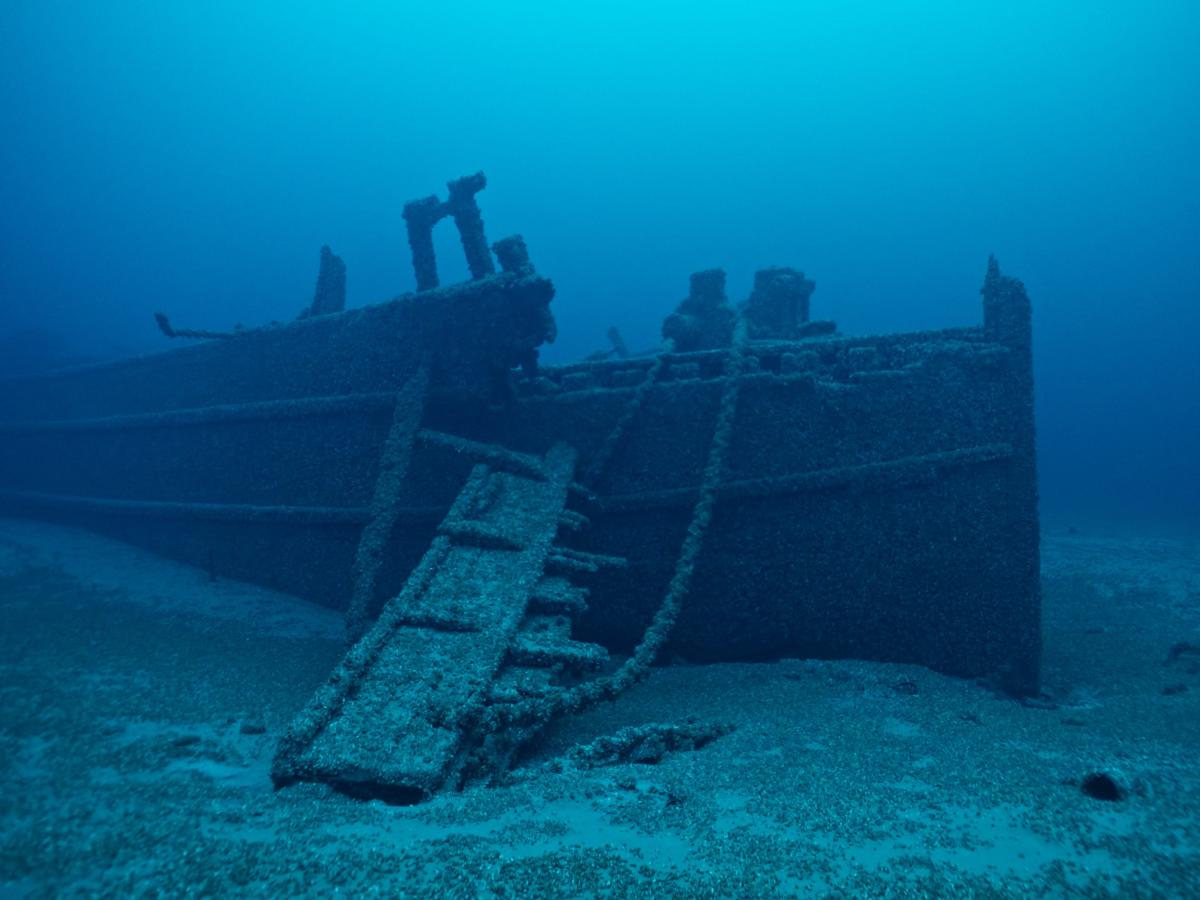Filmmakers shooting footage of invasive mussels in Lake Huron found a shipwreck from 1895.
The “Africa” had been carrying coal from Ohio to Ontario, and was carrying 11 sailors.
The wreck is covered in invasive quagga mussels that are altering the Great Lakes’ ecosystem.
A pair of filmmakers who spent two years shooting footage for a documentary about invasive mussels in the Great Lakes accidentally discovered a 128-year-old shipwreck that vanished in 1895.
The wreck is believed to be the “Africa,” which was carrying coal — along with 11 doomed sailors — from Ohio to Ontario in October of 1895, before disappearing into Lake Huron amid an early season snowstorm, according to the filmmakers.
Over a century later, Yvonne Drebert and Zach Melnick received a tip from scientists while they were working on their documentary.
“Scientists doing an offshore fish survey had noticed an anomaly on their sonar readout, basically an unusual bump on an otherwise flat lakebed,” Melnick said in a press release. The couple, who specialize in underwater videography, grabbed their ultra-low-light, high-resolution camera system, and journeyed out to the site of the anomaly, expecting to find “a pile of rocks.”
Instead, when their remotely operated vehicle descended 85 meters, “a huge structure loomed up from the depths — it was a shipwreck. We couldn’t believe it,” Melnick said.
The wreck was difficult to identify — images from the filmmakers show the ship is covered by the invasive quagga mussels that have been overhauling the ecosystem of the Great Lakes.
Every inch of the “Africa” is covered with invasive quagga mussels, which have been plaguing the Great Lakes for years.Courtesy of Yvonne Drebert and Zach Melnick
But the filmmakers said that with the help of a local maritime historian and a marine archaeologist, the “Africa” emerged as the likeliest possibility. The vessel’s measurements matched that of the “Africa,” plus Melnick and Drebert saw coal scattered across the lake bottom near the wreck.
“There are so many quaggas filtering the Great Lakes, that the lakes are up to three times as clear as they were before the mussels,” Drebert said in the press release. “The quaggas are the reason we’re able to see the shipwreckin almost 300 feet of water without any additional lights. But they’re also responsible for making wreck identification in the Great Lakes incredibly difficult.”
The couple’s documentary, “All Too Clear: Beneath the Surface of the Great Lakes,” will be released in early 2024.
Read the original article on Business Insider
